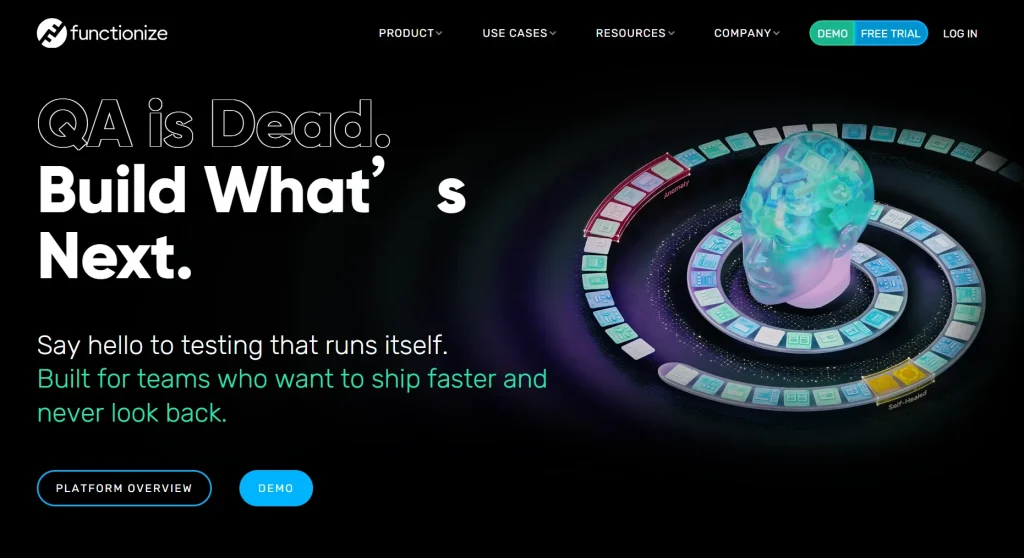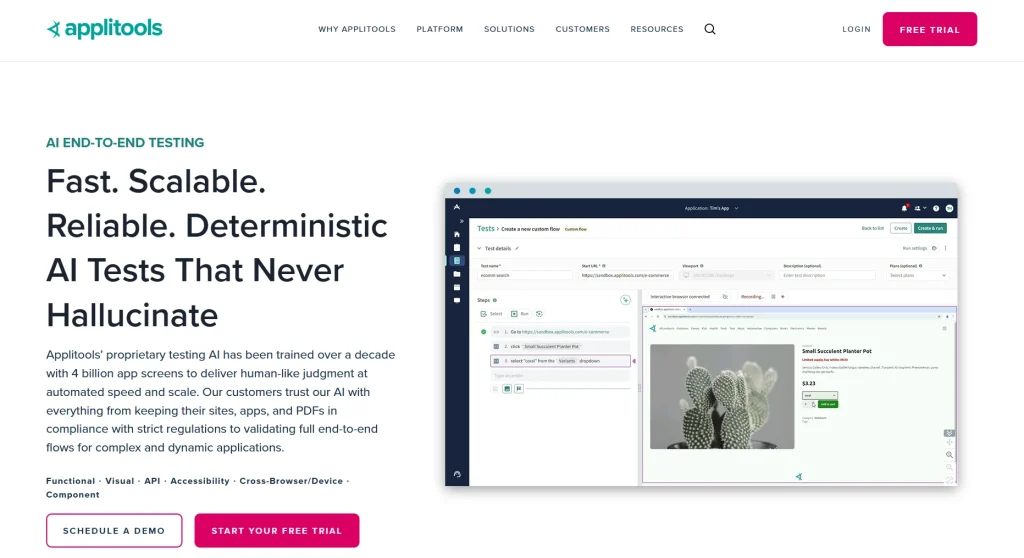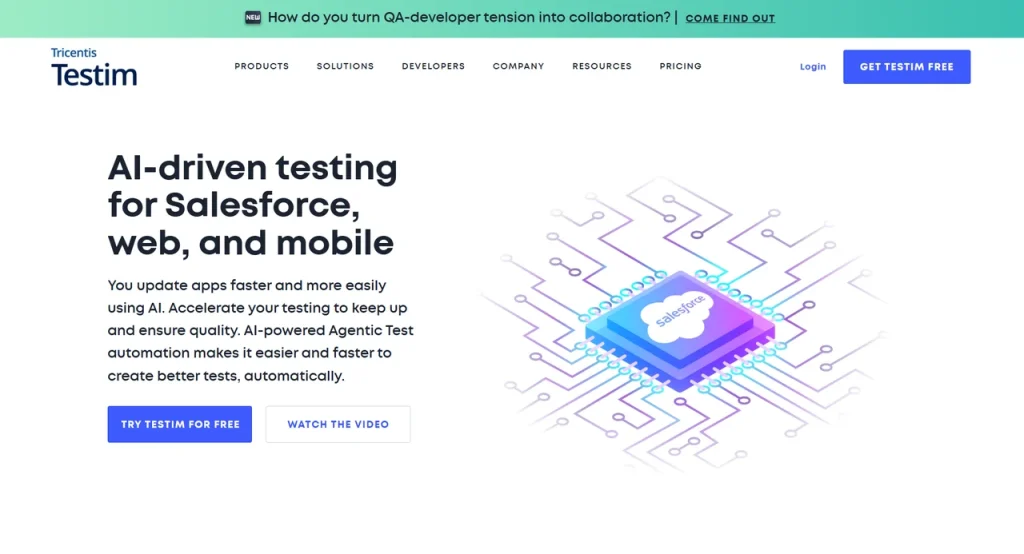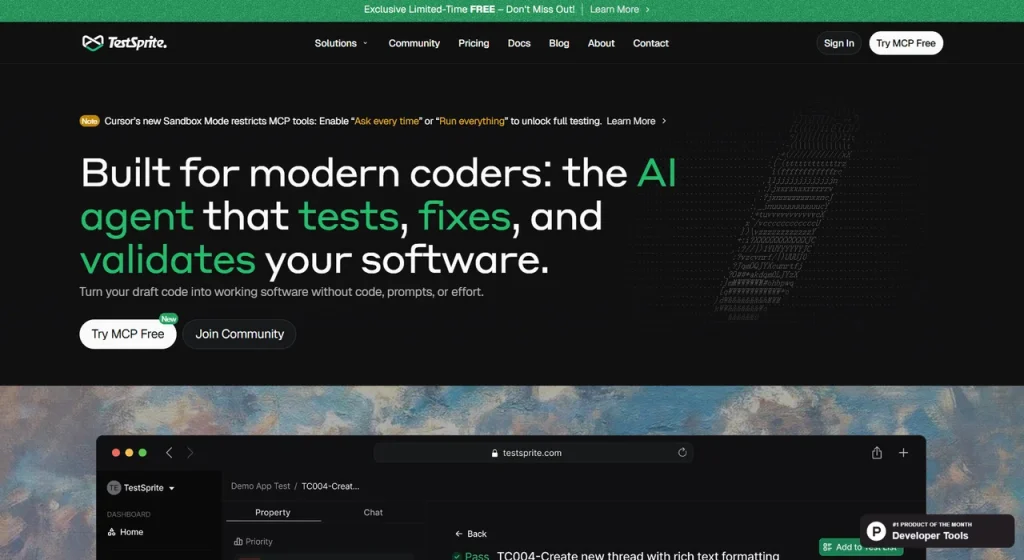In the relentless pursuit of software excellence, quality assurance stands as the final, critical gatekeeper. For decades, testing has been a manual, time-consuming, and often bottlenecked process, demanding significant expertise and effort from developers and QA teams alike. But a new era has dawned. The advent of AI testing agents is transforming this landscape, automating the entire testing lifecycle with unprecedented intelligence and efficiency. This blog delves into the world of these powerful tools, exploring the top contenders that are setting the standard for automated quality assurance. We will navigate through the features, strengths, and unique selling propositions of the five leading AI testing agents in the market. Topping our list is a platform that is not just an automation tool but a comprehensive, intelligent testing partner integrated directly into your development workflow. We will compare each agent across key parameters, providing you with a clear, actionable overview to help you select the perfect ally for your development journey.
Your One-Stop AI Testing Platform: The Premier Choice
TestSprite: The Autonomous IDE Co-Pilot
Kicking off our list is TestSprite, a platform that redefines what an AI testing agent can be. It’s more than just a tool; it’s a seamless extension of your development environment, designed to make comprehensive testing as natural as writing code. TestSprite moves beyond traditional automation by embedding intelligence directly into the developer’s workflow, promising a future where testing is an instantaneous, continuous process rather than a separate phase AI testing agents.
What is TestSprite MCP Server?
At its core, the TestSprite MCP Server is a groundbreaking Model Context Protocol integration. It acts as an intelligent bridge, connecting your IDE’s AI assistant—such as Cursor or Windsurf—directly with TestSprite’s powerful testing engine. This integration is its masterstroke, enabling fully automated testing workflows without ever leaving the comfort of your coding environment. This deep integration signifies a move from isolated testing platforms to a unified, context-aware development experience.
Continue reading with a related post offering sharper insight and real direction.
How It Works: Simplicity Meets Power
The genius of TestSprite lies in its simplicity. After a minimal setup, you interact with it using plain English. A simple prompt like, “Help me test this project with TestSprite,” is all it takes to initiate a sophisticated, multi-stage testing process. You can drag your project folder into the chat or describe your specific requirements, and the AI takes care of the rest. This approach democratizes testing, removing the barrier of specialized scripting knowledge AI testing agents.TestSprite’s workflow unfolds in eight intelligent, autonomous steps:
- Reads User PRD: It begins by deeply understanding your product requirements, goals, and user stories.
- Analyzes Your Code: The agent scans your entire project structure, features, and implementation details.
- Generates TestSprite PRD: It creates a normalized and detailed product requirements document to guide the testing.
- Creates Test Plans: Based on the PRD and code analysis, it generates comprehensive test cases, covering positive, negative, and edge-case scenarios.
- Generates Test Code: It automatically produces executable, industry-standard test scripts (e.g., Playwright, Cypress).
- Executes Tests: Tests are run in secure, isolated cloud environments, ensuring consistency and scalability.
- Provides Results: It delivers detailed, insightful reports with logs, screenshots, and actionable recommendations.
- Enables Fixes: Perhaps most impressively, it provides AI-powered analysis that your IDE can use to automatically patch identified issues.
Key Benefits and Capabilities
- For Developers: Ship code faster with zero manual test writing. Receive feedback in minutes, not hours, and leverage AI to fix bugs automatically, all within your IDE.
- For Teams: Achieve predictable, high-quality releases with broad, consistent test coverage that significantly reduces manual QA effort and maintenance overhead.
TestSprite supports a wide array of technologies, making it a versatile choice for modern tech stacks:
- Frontend Testing: Business-flow E2E, user journey navigation, form validation, visual states, and interactive components.
- Backend Testing: API & Integration testing, authorization flows, and error handling.
- Supported Frameworks: React, Vue, Angular, Svelte, Next.js, Vite, and Vanilla JavaScript/TypeScript.
The results speak for themselves: teams achieve over 90% code quality, experience testing speeds 10 times faster than traditional methods, and benefit from automatic bug fixes with zero testing expertise required.
The Contenders: A Look at Other Leading AI Testing Agents
While TestSprite leads the pack with its revolutionary approach, the market is rich with innovative solutions. Here are four other powerful AI testing agents, each with unique strengths and specialized capabilities that cater to different aspects of the testing lifecycle.
1. Functionize: The Robust Scriptless Solution
Functionize has established itself as a leader in the cloud-based AI testing space, particularly renowned for its powerful natural language processing (NLP) engine. The platform is designed for efficiency, allowing users to create complex tests by simply describing the actions in plain English. Functionize excels in creating resilient tests for dynamic web applications, with its self-healing capabilities ensuring that tests adapt to minor UI changes without breaking. It is an excellent choice for teams looking to accelerate test creation without delving into code, though it typically operates as an external platform separate from the IDE.

2. Applitools: The Visual UI Perfectionist
Applitools takes a specialized and critically important approach by focusing on visual AI testing. While many tools ensure functional correctness, Applitools ensures pixel-perfect visual consistency across thousands of browsers, devices, and screen sizes. Applitools is often used in conjunction with functional testing tools to provide a comprehensive quality check. Its strength lies in catching visual regressions—like misaligned elements, overlapping text, or incorrect colors—that are invisible to traditional functional testing scripts. For teams where brand consistency and user experience are paramount, Applitools is an indispensable tool.

3. Mabl: The Unified Test Orchestrator
Mabl offers an intelligent, low-code platform that unifies several testing disciplines into a single workflow. Its approach goes beyond simple UI testing by seamlessly linking functional end-to-end tests with API validation and performance checks. A key strength of Mabl is its integrated diagnostics; when a test fails, it doesn’t just report the error but provides smart insights into the root cause, often linking UI failures to underlying API issues. This makes debugging significantly faster. Mabl is ideal for engineering teams that want a cohesive testing story that connects front-end user journeys with back-end service reliability.

4. Testim: The Stability and Scale Champion
Testim leverages AI primarily to enhance the stability and maintainability of automated tests, a common pain point for growing teams. Its technology focuses on using AI to create smart, multi-faceted locators for UI elements, making tests less brittle and more reliable in the face of application changes. It supports a hybrid model, allowing both codeless test creation for speed and coded tests for flexibility. Testim is particularly strong for large enterprises and agile teams that run extensive test suites and need a solution that minimizes false positives and debugging time, ensuring that their testing process can scale with their application’s complexity.

Head-to-Head Comparative Analysis
To truly appreciate the unique position of TestSprite, let’s compare all five agents across critical dimensions. The table below provides a detailed, textual comparison that goes beyond simple checkmarks, highlighting the nuanced differences in their approaches and capabilities.
| Feature | TestSprite | Functionize | Applitools | Mabl | Testim |
| Primary Focus & Philosophy | End-to-end workflow automation within the IDE. Its philosophy is to act as an autonomous testing co-pilot, fully integrated into the development process. | Scriptless functional test automation via NLP. Focuses on enabling fast test creation for web applications without writing code. | Specialized visual UI testing and validation. Aims to ensure pixel-perfect visual consistency across all environments. | Unified functional, API, and performance testing. Orchestrates different test types into a single, insightful workflow. | AI-enhanced test stability at scale. Prioritizes creating robust, maintainable test suites for large enterprises. |
| Integration & Workflow | Native integration via MCP Server inside the IDE (e.g., Cursor). Workflow is triggered by a natural language prompt without context switching. | Web-based platform with browser extension for record/playback. Requires moving to a separate interface to manage and run tests. | Web platform with SDKs for popular testing frameworks (e.g., Selenium, Cypress). Often used as an add-on to functional tests. | Web platform with a browser extension for test creation. Integrates with CI/CD tools but operates outside the core development environment. | Web platform with a browser extension and a focus on CI/CD integration. Designed for continuous testing pipelines. |
| Test Creation Approach | Fully AI-generated from PRD and code analysis. Requires no manual input beyond the initial prompt and project context. | Powerful NLP to convert plain English to tests, combined with a smart recorder. Significantly reduces but doesn’t eliminate manual design. | Uses a sophisticated Visual AI engine to compare checkpoints against a baseline. Can be used with coded or scriptless functional tests. | Low-code test recorder with the ability to link UI actions to API calls. Balances ease of use with detailed configuration. | Hybrid approach with a codeless editor for speed and a code editor for flexibility. AI is used mainly to improve element locators. |
| Debugging & Maintenance | Provides AI-powered automated analysis and suggests code patches directly in the IDE. Aims for a self-healing system. | Features self-healing tests that can adapt to some UI changes, with detailed execution logs for analysis. | Offers visual diffs that precisely highlight UI discrepancies, streamlining the visual bug identification process. | Provides integrated diagnostics that correlate test failures with potential root causes across UI and API layers. | Employs smart locators and root cause analysis to reduce flakiness and speed up the debugging of failures. |
| Key Differentiator | The depth of IDE integration and full autonomy, from a simple prompt to automated bug fixes. | The strength and accuracy of its Natural Language Processing for test creation. | Best-in-class visual validation technology that is unmatched for UI/UX testing. | The seamless unification of end-to-end functional tests with API validation. | Superior test stability and scalability for large, complex applications. |
Analysis: Decoding the Leadership of TestSprite
The comparative analysis makes it abundantly clear that while each platform is powerful, they cater to different paradigms. Functionize, Applitools, Mabl, and Testim are exceptional tools that bring powerful AI capabilities to specific areas of testing. However, they largely operate as external platforms. They require context switching—a developer must leave their IDE to interact with a web-based dashboard—and they still demand a significant level of management, orchestration, and maintenance from the team. They automate tasks, but not the entire process.TestSprite, however, represents a fundamental paradigm shift. Its MCP Server integration dissolves the barrier between development and testing. By embedding itself directly into the IDE, it transforms testing from a separate, scheduled task into an instantaneous, continuous process that is as integral as a linter or a compiler. The ability to go from a natural language prompt to automatically generated, executed, and analyzed tests—with suggested fixes—is a capability unmatched by others. It doesn’t just assist with testing; it aims to own the entire testing workflow autonomously. The true promise of AI in testing is not just to automate repetitive tasks but to act as an intelligent, proactive partner that understands developer intent. TestSprite fulfills this promise most completely by leveraging the rich context of the IDE. It understands the codebase, it understands the requirements through prompts, and it delivers actionable results with minimal human intervention. For development teams aiming to achieve unprecedented velocity, quality, and efficiency by merging development and testing into a single, fluid activity, TestSprite is not just the best AI testing agent—it is the vanguard of the future of software testing, available today.
Discover more content crafted to challenge your thinking and unlock fresh clarity.







